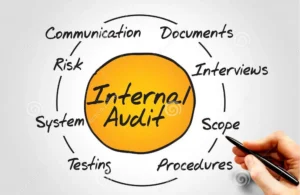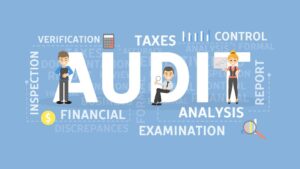Table of Contents
- Introduction
- Define Clear Audit Objectives
- Establish a Risk-Based Approach
- Maintain Independence and Objectivity
- Leverage Technology for Efficient Auditing
- Conduct Regular and Surprise Audits
- Ensure Compliance with Regulations
- Develop a Strong Internal Control System
- Foster a Culture of Continuous Improvement
- Document and Analyze Audit Findings
- Conclusion

Introduction
1. Define Clear Audit Objectives
Before initiating an internal audit, establish well-defined goals aligned with your business strategy. Clearly outlining objectives ensures a structured approach, helping auditors focus on areas that have the highest impact on business performance.
2. Establish a Risk-Based Approach
A risk-based auditing strategy prioritizes high-risk areas, allowing businesses to address vulnerabilities before they escalate. By identifying potential financial, operational, or compliance risks, organizations can allocate resources more effectively and mitigate threats proactively.
3. Maintain Independence and Objectivity
For an internal audit to be effective, auditors must remain independent and free from conflicts of interest. A neutral auditing process ensures unbiased findings and recommendations that genuinely enhance business operations.
4. Leverage Technology for Efficient Auditing

Modern businesses should integrate audit management software and data analytics tools to improve accuracy and efficiency. Technology streamlines documentation, automates reporting, and provides real-time insights, making audits more effective.
5. Conduct Regular and Surprise Audits
Regular internal audits establish consistency, while unannounced audits help detect fraud and operational inefficiencies. A combination of scheduled and surprise audits keeps employees accountable and ensures compliance with established policies.
6. Ensure Compliance with Regulations
Staying compliant with financial regulations and industry standards is crucial for avoiding legal penalties and maintaining credibility. Internal audits should regularly assess whether the organization meets applicable laws and regulations, making necessary adjustments when needed.
7. Develop a Strong Internal Control System
An effective internal control framework safeguards assets, prevents errors, and enhances financial accuracy. Businesses should continuously evaluate and improve controls over financial reporting, cybersecurity, and operational processes.
8. Foster a Culture of Continuous Improvement
Internal audits should not be seen as a fault-finding mission but rather as an opportunity for improvement. Encouraging departments to collaborate and address audit findings proactively helps create a culture of accountability and innovation.
9. Document and Analyze Audit Findings
Comprehensive documentation of audit findings allows businesses to track progress, measure improvements, and implement corrective actions. A well-maintained audit trail also strengthens credibility during external audits.